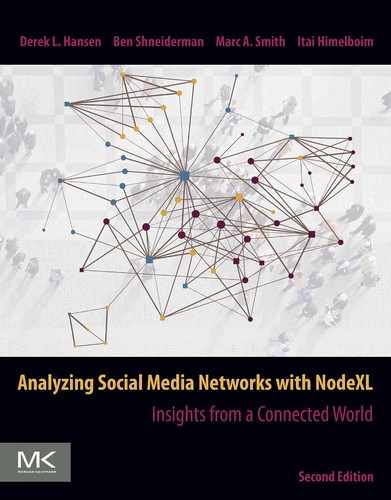About the Authors
Derek L. Hansen (http://www.et.byu.edu/~dlh24/) is an associate professor of Information Technology & Cybersecurity at Brigham Young University. His research and teaching focus on understanding and designing social technologies, tools, and games for the public good in areas ranging from education to citizen science to fitness to transcription of historical documents. He has received over $2 million in grants to help develop and evaluate novel technical interventions, alternate reality games, and educational simulations (called Playable Case Studies) with highly talented faculty, students, and professionals from a variety of disciplines. He completed his Ph.D. from the University of Michigan’s School of Information where he was a National Science Foundation-funded interdisciplinary STIET Fellow focused on understanding and designing effective online sociotechnical systems.
Ben Shneiderman (www.cs.umd.edu/~ben) is an emeritus distinguished university professor in the Department of Computer Science and founding director (1983–2000) of the Human-Computer Interaction Laboratory (www.cs.umd.edu/hcil) at the University of Maryland. He was elected as a fellow of the Association for Computing (ACM), the American Association for the Advancement of Science (AAAS), the IEEE, and the National Academy of Inventors. He received the ACM SIGCHI lifetime achievement award and was elected as a member of National Academy of Engineering. He is the lead author of Designing the user interface: Strategies for effective human-computer interaction (6th ed., 2016). He wrote Leonardo’s laptop: Human values and the new computing technologies and the new ABCs of research: Achieving breakthrough collaborations.
Marc A. Smith is a sociologist specializing in the social organization of online communities and computer- mediated interaction. He leads the Connected Action consulting group and lives and works in Silicon Valley, California. He is the coeditor, with Peter Kollock, of Communities in cyberspace (Routledge), a collection of essays exploring the ways identity, interaction, and social order develop in online groups. His research focuses on computer-mediated collective action: the ways group dynamics change when they take place in and through social cyberspaces. Many “groups” in cyberspace produce public goods and organize themselves in the form of a commons (for related papers see http://connectedaction.net/marc-smith). His goal is to visualize social cyberspaces, mapping and measuring their structure, dynamics, and life cycles. He also oversees the Social Media Research Foundation (https://www.smrfoundation.org/), which is a nonprofit organization that oversees the ongoing development of NodeXL Pro (https://nodexlgraphgallery.org/) and its use in research and teaching. The Connected Action consulting group (http://www.connectedaction.net) applies social science methods in general and social network analysis techniques in particular to enterprise and Internet social media usage. He received a B.S. in International Area Studies from Drexel University in Philadelphia in 1988, an M. Phil. in social theory from Cambridge University in 1990, and a Ph.D. in Sociology from UCLA in 2001. He is a member of the Media-X research consortium at Stanford University.
Itai Himelboim is an associate professor at the University of Georgia’s Grady College of Journalism and Mass Communication, Department of Advertising and Public Relations and a director of the SEE Suite—the Social Media Engagement and Evaluation lab (http://seesuite.uga.edu). He completed his Ph.D. from the University of Minnesota’s School of Journalism and Mass Communication, focusing on the intersection between civil society and computer-mediated social networks. His research and teaching interests include social network analysis of large social media data related to news, brands, politics, health, and international affairs. In his research, he examines the network structures that emerge when users interact on Twitter and other social media spaces, patterns of information diffusion, the emergence of network clusters as information echo chambers, key information sources in these networks, as well as identifying key users and content that bridges these information silos.
